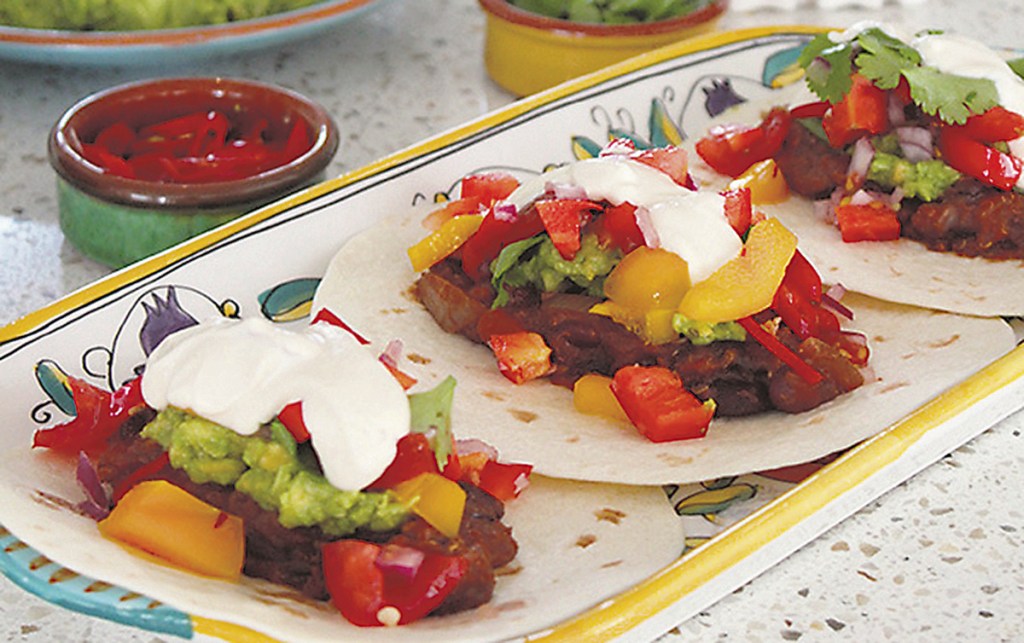Slow — de Mayo
Published 5:00 am Wednesday, May 3, 2017

- Don’t let working late slow you down from enjoying Cinco de Mayo — let your slow cooker do the work.
Celebrate Cinco de Mayo with slow-cooker recipe
Get ready to celebrate this Friday with good Mexican food and beverages— whether or not you truly have a cause for celebration. Anytime is a good time for Mexican food.
It finally occurred to me that one of the reasons I’ve not been delving into the art of cooking, the time has just not allowed the preparation. Preferring to work into the evening hours, often at an event that will bring a later reporting, prep for mealtime is just not on the agenda.
Truth is found in conversation — many Teche Area residents have grown tired of cooking — or with school children, running to afterschool activities or homework just doesn’t allow the luxury of old-fashioned meal preparation.
Recognizing that fact made the story and search for slow-cooker recipes a priority. Then the slow-cooker taco appeared. The assembled slow-cooker recipes will have to wait. It’s time for a trip to Mexico.
History Worth Celebrating
According to SmithsonianMag.com, Cinco de Mayo, as celebrated in the United States, shares some similarities to St. Patrick’s Day: a mainstream marketing fiasco that’s evolved out of an authentic celebration of cultural heritage. The typical Cinco de Mayo is a day of eating tacos and drinking margaritas. But, just like you won’t find corned beef and green beer in Ireland on St. Patrick’s Day, you won’t find ground beef tacos, nachos and frozen margaritas in Mexico on Cinco de Mayo.
Contrary to popular belief, Cinco de Mayo is not Mexico’s Independence Day. It celebrates the Mexican victory at the Battle of Puebla during the Franco-Mexican War, which came after Mexico’s independence from Spain, the Mexican-American War and the Mexican Civil War. In our neighbor to the south, the holiday is mainly celebrated in the region of Puebla, and mostly in the state’s capital city of the same name, the historic magazine said. Read more at www.smithsonianmag.com/arts-culture/what-to-really-eat-on-cinco-de-mayo.
What We Know
Celebrating in South Louisiana does not require factual historic traditions. Give Cajuns an excuse to indulge in food and beverages and they are all in. Coming to New Iberia and meeting the first friends of the Teche Area had its own Mexican beginnings in 2013. If memory serves, it was to celebrate Cinco de Mayo. Although these friends weren’t serious about that reason, it was a weekly tradition to meet at Tampicos for a trip to “Mexico.” It was an escape to what would become my new home. And the tradition continues four years later.
Friday nights at Tampicos with friends was not the first Mexican get away. The tradition actually began during college when LaFonda’s in Lafayette was in its heyday. Memory does not serve me how the tradition began or at what point it became a favorite outing.
The drinking age was probably 18 so it stands to reason it was after high school, a time we regularly met at the Branton home and sang around the piano until the week hours of the morning. After all, at the time we were alumna from Lafayette High School’s award-winning A capella choir.
With friends coming in on Friday night from various colleges, the two-hour wait for a table at LaFonda was hardly a problem. It was an opportunity to laugh and tell stories — drink frozen margaritas and sing at the bar. Perfecting the frozen concoction was easy with a bartender on first name basis and one of your best friends a popular highly paid waiter — a great way to work and go to school. In fact, he took a pay cut to become a civil engineer at an international oilfield company.
The gathering of friends at LaFonda went on for years — not just for some, but a great many in Acadiana because the popularity of Mexican food and restaurants had not reached the level it has today. The choices were few. Needless to say, when the slow-cooker tacos became a reminder of Cinco de Mayo, today’s subject had to change. Mexican flavors need to be enjoyed.
Spices from Mexico
What is it that makes Mexican food taste so good — besides the hot peppers and salsa? Let’s not even get into the number of chips that are consumed by most visitors at a Mexican Restaurant. Had the thought occured earlier, that would be an interesting research topic. Alas, it remains a mystery today.
Spicesinc.com explains that Mexican cuisine, like many others, is a fusion that takes elements from Mesoamerican cooking and adds a flair of European elements, especially Spanish. This is primarily a result of the Spanish conquest of the Aztec Empire.
When the Spanish arrived in Mexico they found the Aztec diet consisted primarily of corn base dishes that often featured chiles, beans, tomatoes, and herbs. But the Aztecs also frequently used chocolate, vanilla, avocado, papaya, pineapple, achiote, also known as annatto, squash, sweet potato, turkey and fish. The Spanish introduced them to olive oil, almonds, beef, chicken and pork.
The spices and herbs that are native to Mexico include chocolate (cacao), chiles and vanilla. While they may have originated in Mexico, like many spices and herbs, their increased demand has led to their cultivation throughout the world.
In the U.S. many of us think that the Tex-Mex style of cooking with burritos, chalupas, enchiladas, fajitas and tacos is “Mexican” food. But the truth is these foods are prepared very differently in kitchens throughout Mexico.
Mexican cooking is all about freshness. Their meat, normally chicken, pork and beef, is found locally as opposed to Tex-Mex meat which normally consists of ground beef. Another major difference between the two is the cheese. Traditional Mexican food uses white cheeses such as queso blanco, queso fresco, queso asadero, queso Qaxaca, queso panela or queso Chihuaha. The instantly recognizable yellow cheese used in Tex-Mex cooking is more of an American product.
Lastly, sour cream is nonexistent in traditional Mexican cooking as dishes are topped with an assortment of fresh produce such as lime juice, raw or grilled onions, fresh cilantro or avocados. Are you hungry yet?
The Rest of the Story
Some of the most common flavors you may find in Mexican food are garlic and onions used either fresh or dried. They are found in many staple recipes such as Carne Asada, Cheese Enchiladas, Pico De Gallo and seasoning blends. When a recipe calls for fresh onions you can use white, yellow or red onions.
Other common flavors are cumin, coriander, chile powder and oregano. There are several varieties of oregano but for the most authentic taste in Mexican dishes Mexican oregano is preferred. This gives these dishes a rich earthy flavor.
While cumin is believed to have been first used in Egypt as far back as 4,000 years ago it is also often found in the spicier cuisines like Mexican. Cumin’s very distinctive flavor possesses a warm, spicy-sweet and somewhat bitter taste and it is recommended that it is used sparingly as it can easily overwhelm a dish.
Mexican chiles are a staple and a true Mexican dish always has some form of chile in it whether it’s fresh, whole dried, flakes or ground. If a snack or meal does not use chiles then hot sauce is frequently added.
Some of the more popular Mexican chiles are Ancho chile which is the dried version of the Poblano chile and features a mild fruity flavor with undertones of plum, raisin, tobacco and a hint of earthiness. This is a medium heat chile. Chipotle chiles are well known for their spicy hotness, but when used in smaller amounts, they can also be a bit mild while adding a spectacular subtle flavor to dishes. Other popular Mexican chiles are the Pasilla, Habanero, Guajillo, Serrano and De Arbol.
Whether you are brave enough to try cooking Mexican at home — take a trip to “Mexico” this week and enjoy being with friends. Think I’ll do the same.





